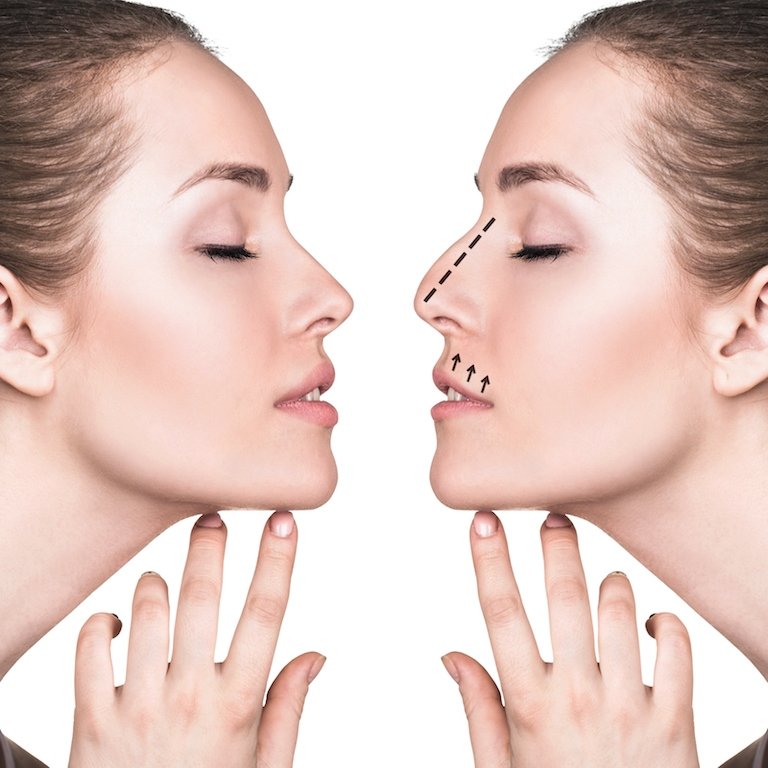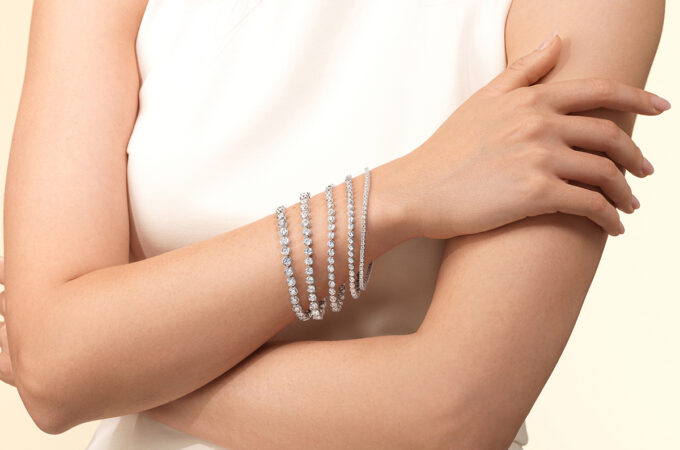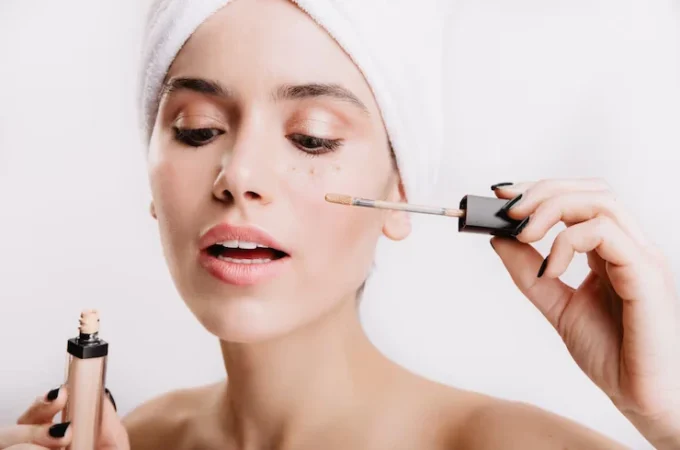
Rhinoplasty Techniques, Explained
When any rhinoplasty procedure is performed, the surgeon follows the same basic principle. The goal is to create an aesthetically appealing nose that meets the patient’s desires and is well-balanced with the other facial features. To do this, the surgeon removes excess cartilage and bone from the structure of the nose. If necessary, the nose may be reshaped and strengthened using a cartilage graft. After modifying the internal structure, the surgeon repositions the skin and allows it to heal over the new nose shape.
With that said, rhinoplasties tend to follow one of two approaches. These approaches are very different in their execution, and each has certain benefits and drawbacks. One technique is an open rhinoplasty, while the other is a closed rhinoplasty. With both techniques, the surgeon can make modifications to the interior structure of the nose.
The main factors affecting the choice of the technique are the surgeon’s prior experience and the patient’s original nose shape. The level of involvement in the procedure also makes a difference. Small modifications tend to be better suited to closed rhinoplasty.
Open Rhinoplasty

This procedure, also commonly called external rhinoplasty, involves a combination of hidden and visible incisions. Some of the incisions are made inside the nostrils. However, an incision is also made on the external portion of the skin connecting the two nostrils. After the incision is complete, the skin of the nose can be pulled back entirely from the structure.
With an open rhinoplasty, the surgeon has better visual access to the structure of the nose. If major reshaping is necessary, that visual help is vital. The surgeon can manipulate the shape more precisely to make sure that the final result is shaped and aligned correctly. Open rhinoplasty procedures tend to be recommended for complicated revisions and for situations in which extended correction is necessary.
Open Rhinoplasty’s Benefits and Drawbacks
An open rhinoplasty procedure confers the following benefits:
- Easier access for manipulating and reshaping the nose
- Good for examining and dealing with existing flaws in the structure
- Creates room for much more significant revisions to the shape and structure
It’s a great choice when a patient is looking for dramatic results. Meanwhile, the potential drawbacks of the procedure include:
- Longer recovery time before the nose’s new appearance can be truly seen
- External incision means that stitches will need removing and the redness will be unsightly during the healing
- Minor scarring, though this tends to be very faint and unnoticeable unless you’re looking for it
Closed Rhinoplasty
A closed rhinoplasty procedure is called this because there aren’t any external incisions. Every incision made is hidden inside the nostrils. This makes the procedure less invasive and speeds the overall recovery time. However, because of the limited visibility and narrow room to work, this procedure requires a much more skilled surgeon.
Closed rhinoplasties are recommended in cases where the person only needs a few minor changes made, rather than dramatic alterations to the entire structure and shape of the nose.
Closed Rhinoplasty’s Benefits and Drawbacks

Closed rhinoplasty comes with a few significant benefits that give it an advantage over external rhinoplasty procedures:
- Since all the incisions are inside the nostrils, there aren’t any visible scars
- Recovery is quicker because there’s significantly less swelling, so the patient can see the results and return to day-to-day life sooner
- The healing process itself is less unpleasant since no stitches need to be removed
It’s an ideal option for those who want a fast recovery time following a minor alteration to their nose’s appearance. The drawbacks include:
- Requires very high surgeon skill due to the low visibility and necessary precision of working inside the nostrils
- Doesn’t allow for dramatic shape or structural changes
- Limits the surgeon’s ability to be precise regarding corrections and symmetry
If you’re a person getting a complicated restructuring done, this might not be the choice for you. The same is true for those who are dealing with noses that have genetic deformities or healed wrong after being injured. You want your surgeon to have maximum visibility to make sure nothing is missed or misaligned.
Picking the Right Rhinoplasty Technique
You might not be sure how to choose the right technique for your rhinoplasty. For some people, it might be obvious. For others, you might be wondering, “How dramatic is too dramatic for a closed procedure?” That’s part of what consultations are for. The experts at the Becker Rhinoplasty Center who perform rhinoplasty in New Jersey use a variety of different techniques depending on the needs and goals of the patient. Your surgeon will determine whether you’re a good candidate for rhinoplasty, whether your desired appearance is doable, and what technique would suit you best. They’ll discuss your options so that you can give input regarding your wishes.

Some of the things that will be taken into account when choosing the rhinoplasty procedure are:
- How much time do you have to recover from the procedure?
- How active is your lifestyle, and will it be hard to take time off from physical activity to recover?
- What challenges does the current shape of your nose pose?
- How dramatically altered is your ideal result?
- How dark is your skin, since darker skin is more prone toward scarring?
- How comfortable is the surgeon with the precision work necessary for a closed rhinoplasty?
After the Procedure
After the procedure is completed, your surgeon will give you detailed instructions on how to care for your nose at home. Make sure you follow them to the letter to avoid potential complications. You might be prescribed pain medicines to help with the pain for the first few days following the surgery. Certain at-home remedies might also be able to help.




